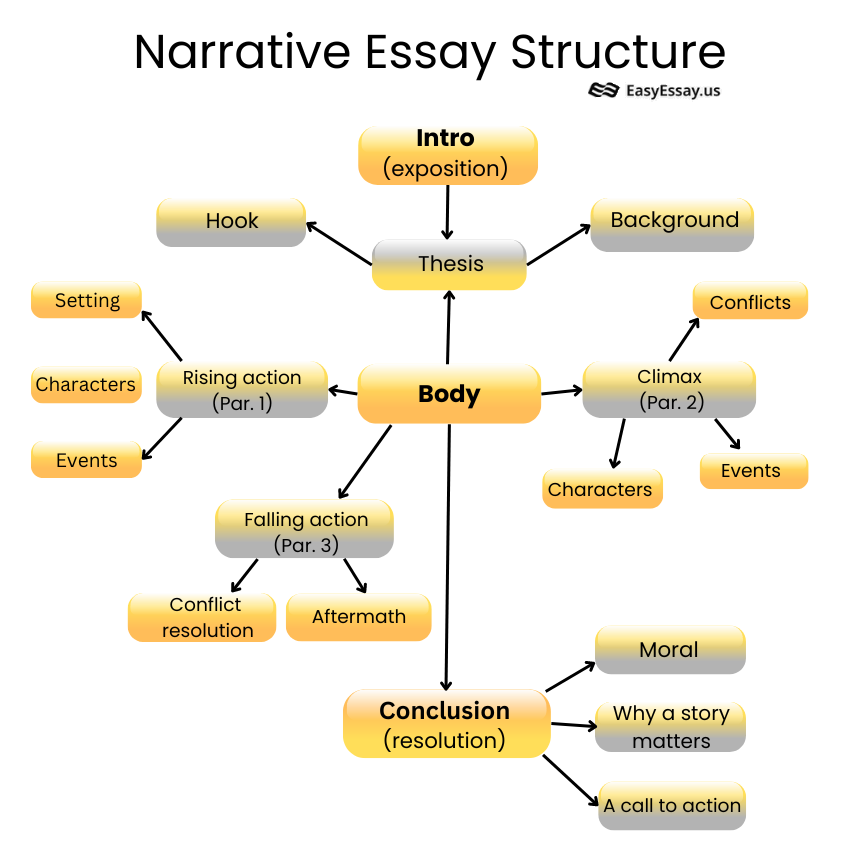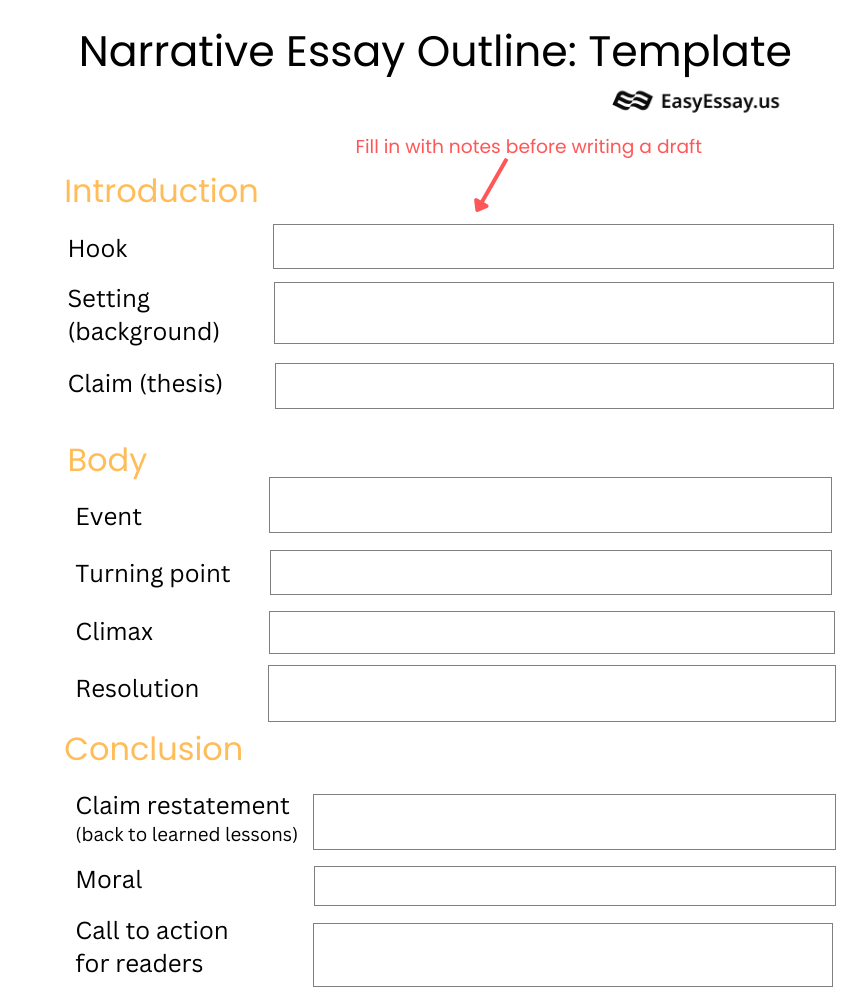People often feel lost when it comes to writing narrative essays. Don’t worry! I have a short guide on writing a stellar narrative essay outline for you.
With the outline in a pocket, you’ll write a perfect paper that readers will love!
But first:
What Is a Narrative Essay?
A narrative essay is a piece of writing where a student tells a personal story using a storytelling format and all the characteristics of narrative writing.
Narrative means “story.” Hence, a narrative essay is one during which you make your readers familiar with the story from your life. (1) It sounds easy because we often tell stories about what happened to us.
However, as with any other essay, here are some tricky things to know to write your paper well. Narrative essays welcome personal pronouns and allow you to use less formal language than academic writing. But:
They still require a clear structure.
Call in mind, have you ever started your story from one point but understood that you need to tell about some other facts and points for another person to catch your main idea? In a narrative essay, you avoid such cases and make your story smooth. And yes, you need to have a thesis statement for it.
Bonus: How to Write a Good Narrative Essay: Step-by-Step Guide
How to Structure a Narrative Essay

1 – Start with a narrative essay introduction.
Many essays should start with a hook that attracts readers’ attention and makes them read further. For a narrative essay, it has specific relevance. Working on the outline, decide on a stellar first sentence that grabs interest.
Also, think about anything your audience needs to know before you start the story:
- Do you need to tell something about yourself?
- Maybe a short introduction for other participants of your story?
- Any events related to it or context without which your story can be unclear?
Finish the introduction with a thesis statement. While you don’t have to provide its final version in the outline, please do your best to decide on the main point of our story to build your text around it.
2 – Write body paragraphs.
The academic approach “one idea—one paragraph” works for narrative essays. In this way, you will make writing easier for yourself and your audience to read.
Also, it’s good if your paragraphs have the same length. In contrast to academic essays, you might not need to measure the word count for each paragraph. Just make them look the same. Or, if we go from the reverse, avoid cases when one of your paragraphs takes half of a page while another has three sentences.
In the case of narrative essays, smooth transitions aren’t as critical as logical ones. You don’t need to describe every minute of the story. But you give readers enough to understand what was happening and why. Ensure you mention all necessary details about events or motivations of the people from your story.
3 – Finish your essay with a conclusion.
A proper conclusion for a narrative essay requires balance. Because, on the one hand, any story needs a conclusion. On the other hand, the conclusion for a narrative essay must be different from the typical conclusions of academic papers.
You don’t need to use large constructions such as “the moral of the story is…” Believe me, your audience is intelligent enough to understand that you’ll provide them with morals at the end of your essay.
You can use “thus,” “hence,” or even “therefore” if you want or need, but you can do without them as well.
The end of the story happens when the last action is over. The conclusion is what you learned from it:
- How has the case changed you?
- What did you find out?
- Why do you want to share this story with others?
Tell about those things, and it’ll be a worthy conclusion. (2)
Narrative Essay Outline: Template

Bonus: Writing a Persuasive Essay Outline [+ PDF Template and Samples]
Narrative Essay Outline: Example
| I. Introduction: 1) The first sentence. Hook for readers’ attention. 2) Introducing people from your story. 3) Context of events: time, place, etc. II. Body paragraph 1: 1) Short prehistory of the event. 2) Your intention/expectations/feelings about the event. 3) Outset. III. Body paragraph 2: 1) Development of events. 2) Your reflections about developments. 3) Other participant’s views. VI. Body paragraph 3: 1) Denouement of the story. 2) Your feelings about it. 3) Other participant’s views. V. Conclusion: 1) How the event impacted on the participants. 2) What did you learn/understand from the event? 3) Why did you want to share this story with others? |
Bonus: How to Write an Informative Essay Outline Like an Expert
How to Outline a Narrative Essay
Now, you have a PDF layout and an example of a narrative essay outline. Feel free to use them to create your own outline and write your narrative essay for college, university, or any other occasion you have.
As you see, I didn’t pay much attention to the essay format here. It’s because formatting matters when it comes to proper source citations. As a rule, you don’t need to cite anything in a narrative essay.
I hope these simple rules of writing a narrative essay outline will help you create a high-quality paper that impresses your audience.
References: